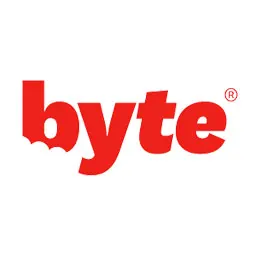How Much Are Braces? Factors That Impact the Price of Braces

Table of Contents
- Types of Braces
- Financial Options
Braces come with big benefits, including better oral health and a more compelling smile.
Braces can also come with a hefty price tag, especially if your oral health issues are significant and you need to wear the devices for a long time.
How much can you expect to pay? Let's break down the costs.

| Tooth-straightening method | Average national cost |
|---|---|
| Metal braces | $4,500 |
| Ceramic braces | $6,000 |
| Lingual braces | $9,000 |
| Invisalign | $4,500 |
| Byte | $2,099 |
Types of Braces & Your Bill
Braces once came in one basic shape (rough) and one standard color (silver). A lot has changed.
As more adults are choosing to wear braces, and as social media sites encourage all of us to share our smiles with the world, customers demand more control. Companies have responded by creating a plethora of braces options.
These are glued onto your teeth and connected with thin, metal wires. These traditional braces typically cost between $3,000 and $7,000.
Your final bill could be bigger if your provider tacks on extra fees for services such as:
Initial visits: $100–$200
Dental x-rays: $10–$250
Retainers: $200–$1,000 for the originals and $100–$500 for replacements
These are also glued onto your teeth, but they're made of a white substance that blends into your natural tooth color. They're not quite so eye-catching, and for some people, that's critical.
Ceramic braces are more aesthetically pleasing and also often cost more — between $4,000 and $8,000.
These devices are glued to the back of your teeth, so no one will see them when you smile. They can affect your speech. These braces typically cost between $8,000 and $10,000.
Gold braces are shiny, and they're almost impossible to ignore (for many, that’s the point). They sit right on the surface of your teeth, and each time you pull your lips back to smile or talk, they catch the light. They cost $2,800 to $7,000.
These plastic trays pop on and off your teeth with ease. While it's critical to wear them often, you could remove them for important photos or conversations. These tools are best for minor to moderate corrections. Usually, an orthodontist will take impressions in their office, and you’ll visit them every couple of months for checkups. Teeth aligners also range in cost, costing between $4,000 and $7,400 on average.
These invisible aligners are based on the same idea as traditional aligners, but they use a different technology that allows for shorter treatment times and lower prices. You’ll do an impression kit at home, an orthodontist will design your aligner treatment plan, and you’ll be mailed the aligners.

What Financial Options Can You Try?
If you're planning to spend money to improve your smile, you're not alone. Researchers say spending on dental procedures rose 4.6 percent in 2018.
Even if your insurance company can't help you, there are plenty of options to try. Some providers offer financial assistance programs for people who can demonstrate financial need.
Cover your braces bill, even without insurance, with one of these options:
If you have a health plan through your employer, they may also offer an FSA. This is an account you can put money in to pay for out-of-pocket medical expenses, which can often include orthodontic treatment, on a tax-free basis. Employers may also contribute to your FSA, depending on your company and their arrangement.
To use your FSA, you will submit a claim to it through your employer, proving the medical expense, as well as a statement that your insurance plan does not cover it. You can then be reimbursed for your costs.
These accounts are limited to $3,050 per year per employer, as of 2023. In most cases, the funds must be used within the same calendar year.
Your doctor may offer low-cost options that help you pay for your braces in installments rather than the whole fee. Breaking up the payments over the timeline of your treatment can make budgeting for braces more affordable, as you will pay a set amount each month or on a schedule that works for you.
You can also take out a personal loan to cover the cost of braces. Orthodontists often offer a discount if you can pay for the entire treatment upfront. You can use a loan to do this and then pay the loan back, with a small interest fee, through affordable monthly payments.
Some loans are specifically for dental procedures. Many different financial institutions offer this option.
Even if your dental insurance does not offer braces and orthodontic treatment coverage, there are many different dental discount plans that can provide a lower rate or a discount on braces. These plans may offer a certain percentage off when you use specific providers within their set network.
Generally, these plans have a low-cost monthly fee that you will pay as well.
If you have plenty of orthodontists in the area, shop for a good deal.
Some dental schools offer discounts on treatment, as long as you agree to work with students in training.
